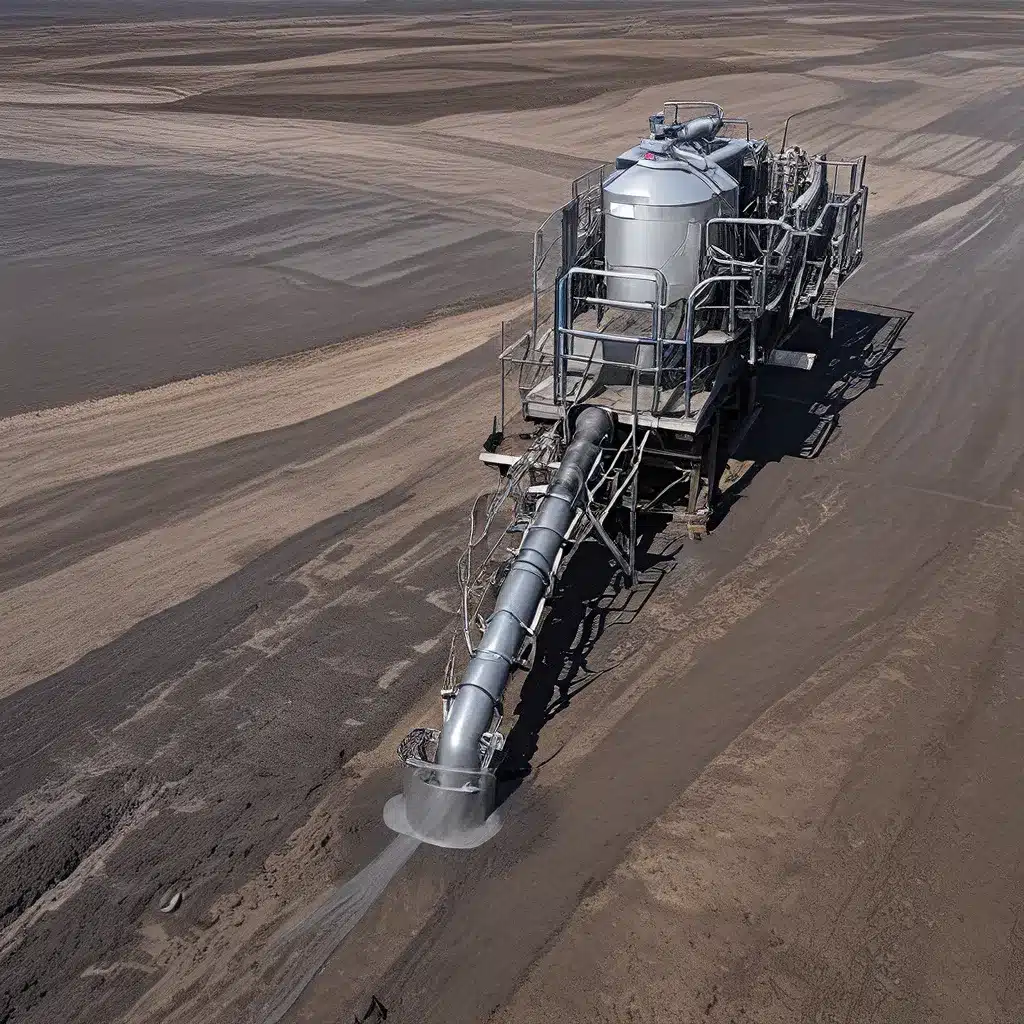
Turning Waste into Wonder: The Power of Thermal Hydrolysis
Imagine a world where our waste not only disappears, but actually becomes a valuable resource. Well, my friends, that world is closer than you might think, all thanks to the incredible process of thermal hydrolysis. As someone who has been fascinated by the intersection of science and sustainability for as long as I can remember, I can’t help but get giddy when I think about the transformative potential of this technology.
You see, biosolids – the nutrient-rich organic material that’s left over from wastewater treatment – have long been a bit of a conundrum. On one hand, they’re packed with all sorts of useful stuff like nitrogen, phosphorus, and organic matter that can be a boon for agriculture and land restoration. But on the other hand, they also come with their fair share of challenges, like the potential for odors, pathogens, and even the presence of trace contaminants.
Enter thermal hydrolysis, the game-changing process that’s poised to revolutionize the way we manage biosolids. By subjecting the material to high temperatures and pressures, this technology is able to break down complex organic compounds, kill off pesky pathogens, and even unlock the valuable nutrients locked within. And the best part? It can all be done in a way that’s surprisingly eco-friendly and energy-efficient.
Unraveling the Thermal Hydrolysis Transformation
So, how exactly does this magical process work? Well, it all starts with a high-pressure, high-temperature reactor that essentially cooks the biosolids to a pulp. This intense treatment breaks down the tough, fibrous materials into a more homogeneous slurry, which makes it much easier to handle and process further.
But the real magic happens when you consider the environmental impact. By pre-treating the biosolids in this way, you effectively supercharge the anaerobic digestion process that follows. This means that the biogas produced during digestion – a mixture of methane and carbon dioxide – is significantly increased, providing a valuable source of renewable energy that can be used to power the treatment plant itself.
“Thermal hydrolysis allows us to extract more energy from the same amount of biosolids, making the overall process more efficient and sustainable.”
And the benefits don’t stop there. The thermal hydrolysis process also helps to significantly reduce the volume of the final biosolids product, making it easier and more cost-effective to transport and dispose of. Plus, the resulting material is much more pathogen-free, reducing the potential for odors and environmental contamination.
The Cutting Edge of Biosolids Management
Now, I know what you’re thinking – this all sounds too good to be true. But the truth is, thermal hydrolysis is very much a real and rapidly-evolving technology that’s making waves in the world of water treatment and environmental services.
Just take a look at what’s happening in San Francisco, where the city’s public utilities department has recently invested in a massive $2 billion upgrade to their biosolids treatment facilities. As part of this project, they’ve chosen to incorporate three state-of-the-art thermal hydrolysis systems from a company called Cambi – marking the first time this technology has been deployed on the West Coast.
“The new digesters will use Cambi thermal hydrolysis systems, allowing the SFPUC to enhance odor control, boost energy recovery, and reduce the plant’s environmental footprint.”
And San Francisco isn’t the only one getting in on the action. Thermal hydrolysis is being adopted by wastewater treatment plants all around the world, from Europe to Asia and beyond, as municipal and industrial facilities alike strive to find more sustainable and cost-effective ways to manage their biosolids.
The Future of Biosolids: Circular Economy in Action
But the real beauty of thermal hydrolysis, in my opinion, is the way it aligns with the growing global push towards a circular economy – a model where waste is minimized and resources are continuously reused and repurposed.
“By transforming biosolids from a waste product into a valuable resource, thermal hydrolysis is helping to close the loop and create a more sustainable, cyclical system.”
Think about it – the methane produced during the digestion process can be used to power the treatment plant, reducing its reliance on fossil fuels. The nutrient-rich biosolids themselves can then be repurposed as a fertilizer or soil amendment, nourishing the very land that we depend on to grow our food. It’s a virtuous cycle that not only reduces our environmental impact, but also creates new economic opportunities and drives innovation.
And the best part? This is just the beginning. As researchers and engineers continue to refine and optimize thermal hydrolysis technology, I can only imagine the even more incredible applications and benefits that will emerge in the years to come. Who knows, maybe one day we’ll be able to turn our waste into energy, fertilizer, and even construction materials – truly closing the loop and creating a more sustainable future for all.
So, the next time you flush the toilet or turn on the tap, I encourage you to take a moment and think about the incredible journey your wastewater is about to embark on. Because thanks to the power of thermal hydrolysis, what was once seen as a mere nuisance is now being transformed into a valuable resource that can help us build a better, more sustainable world. Now, that’s what I call progress!


